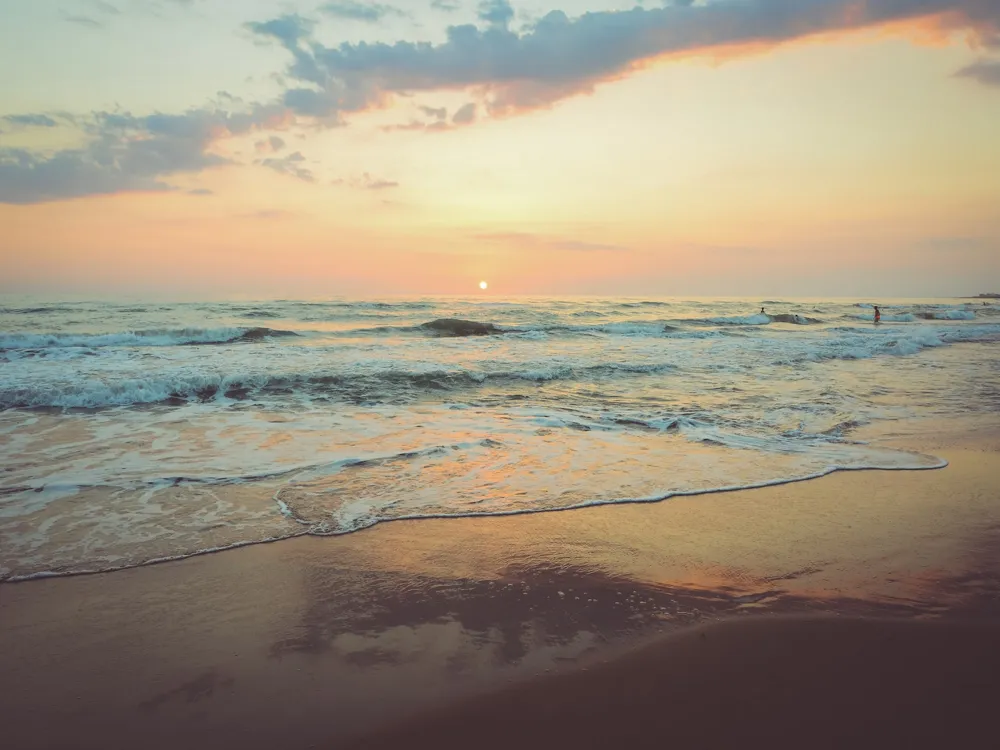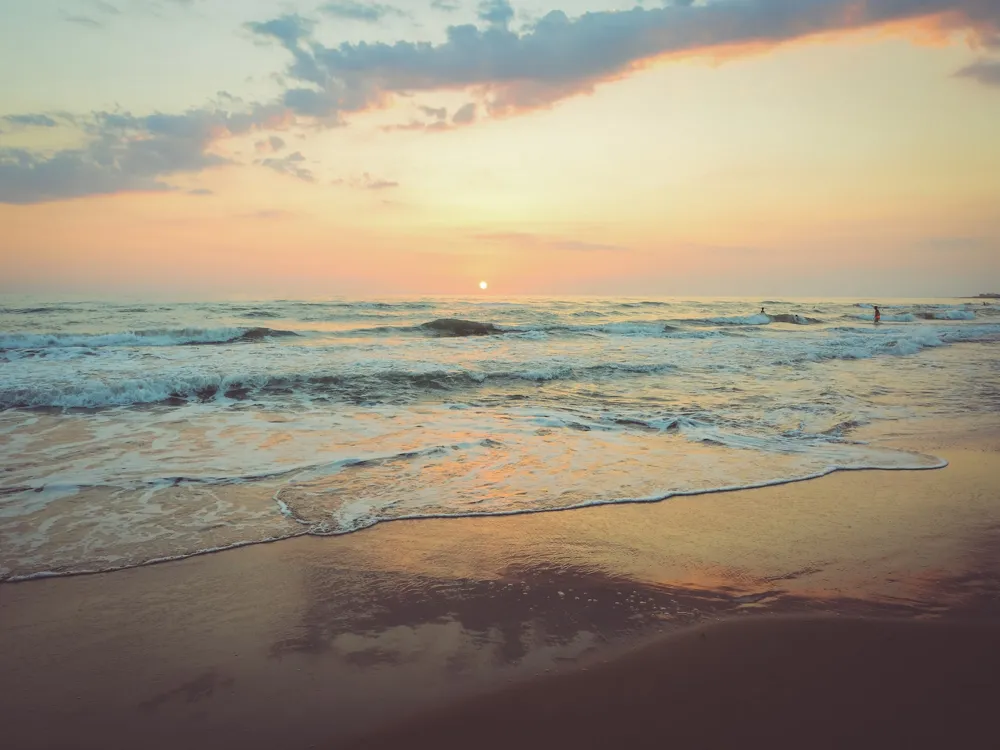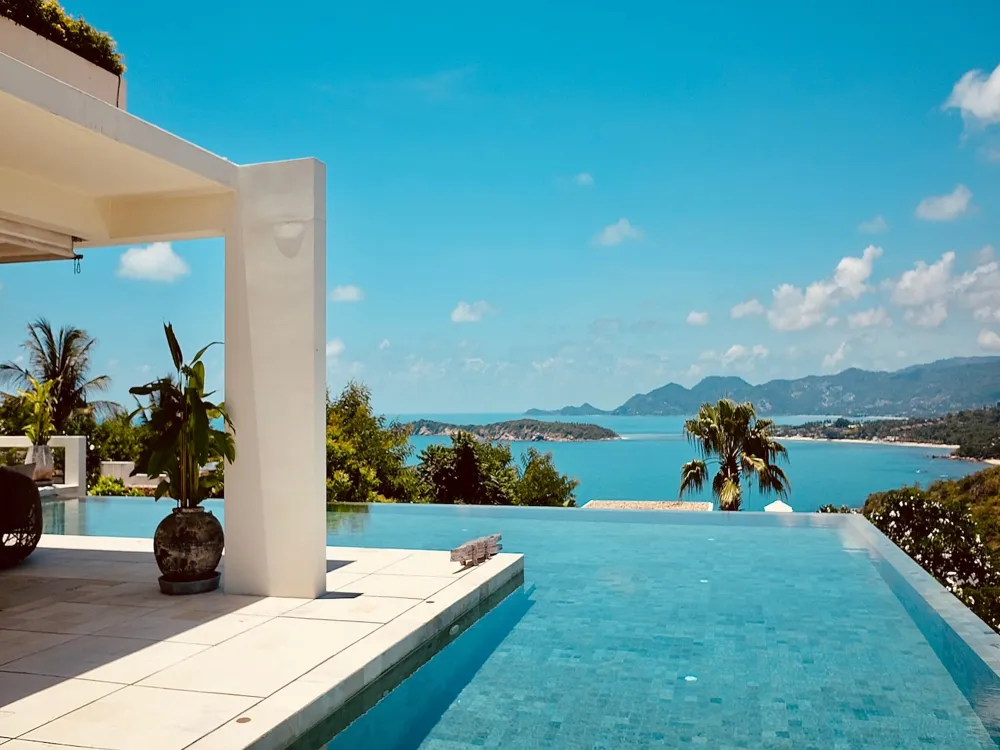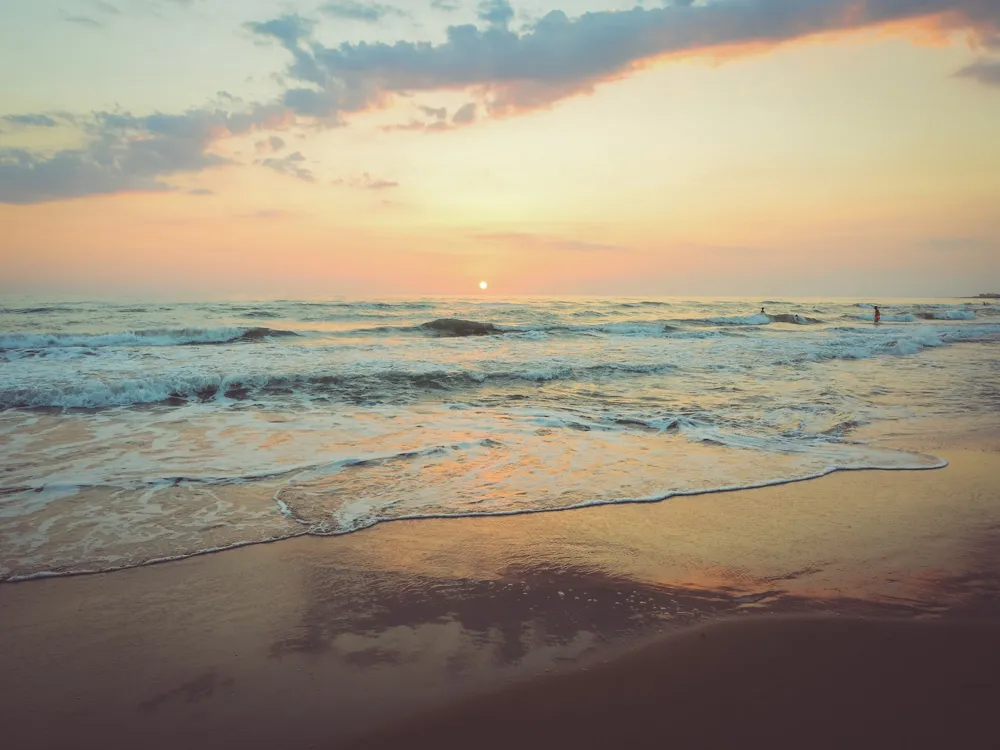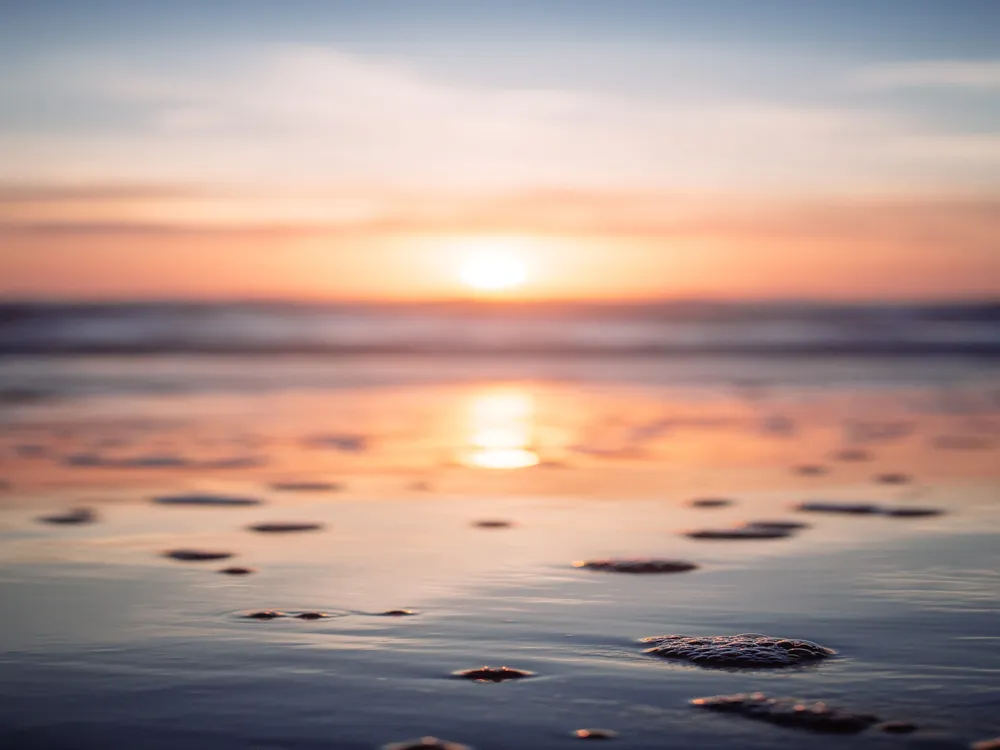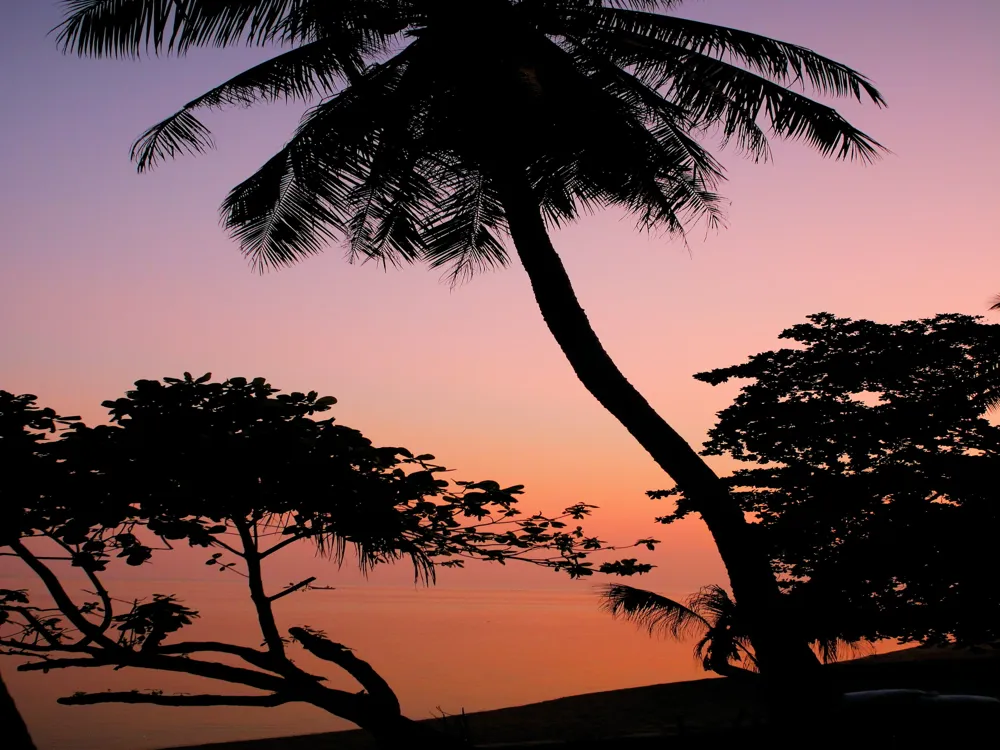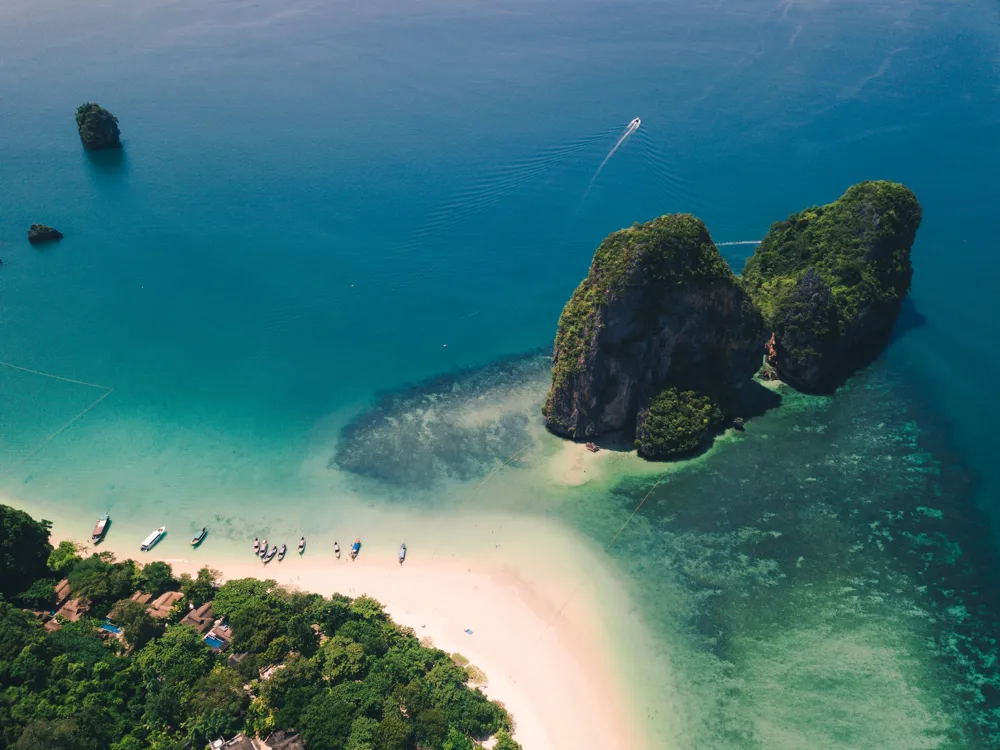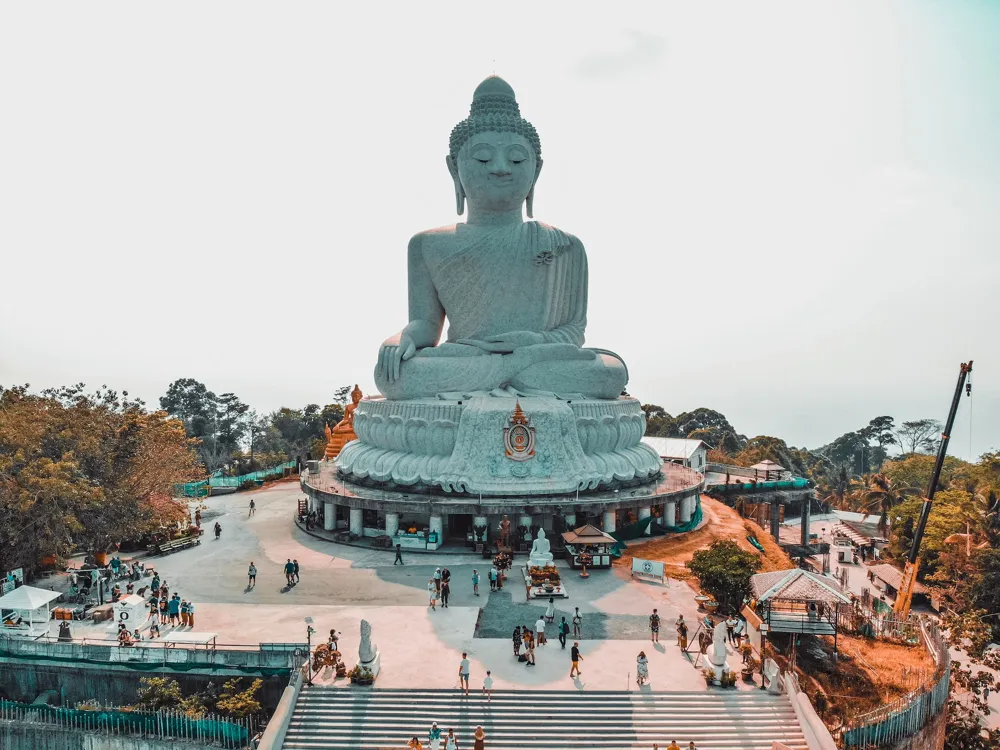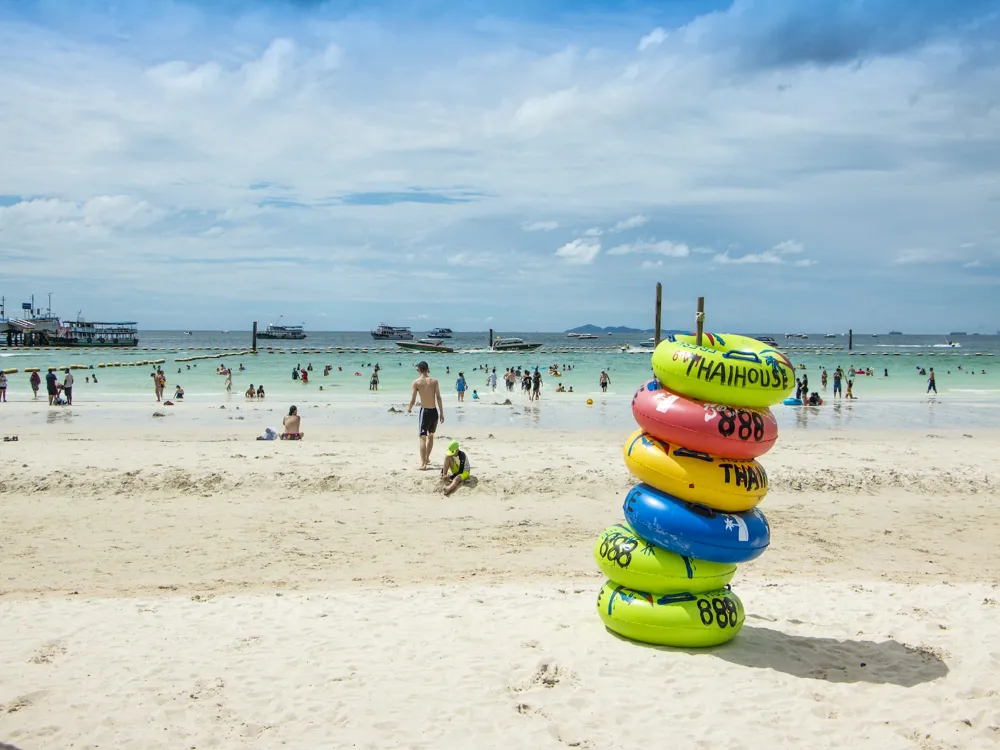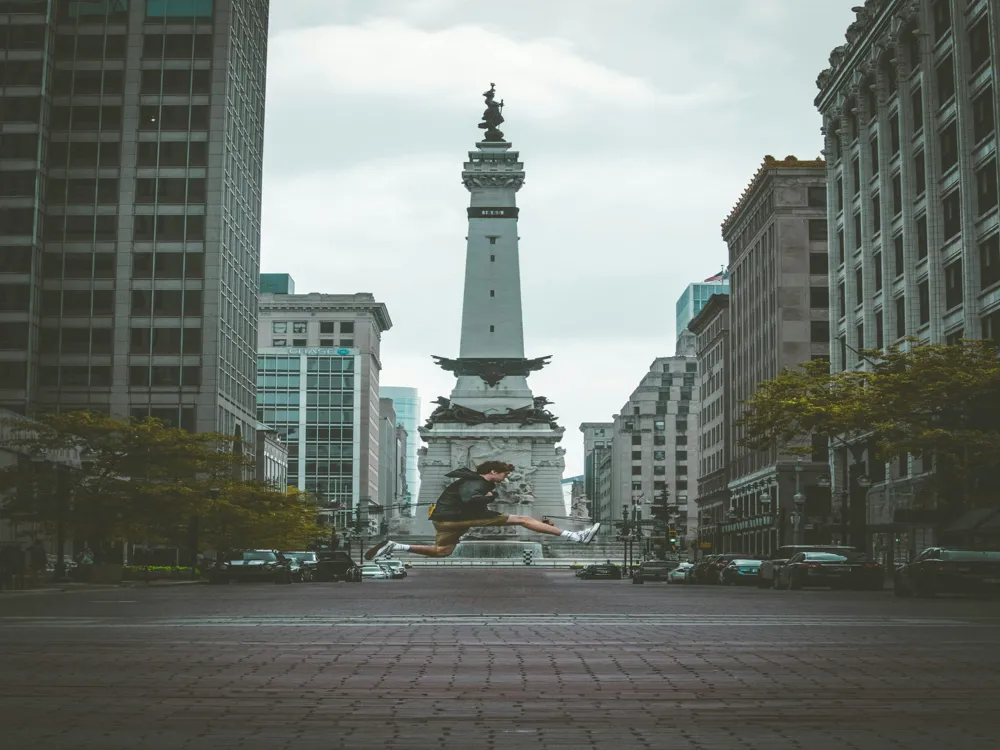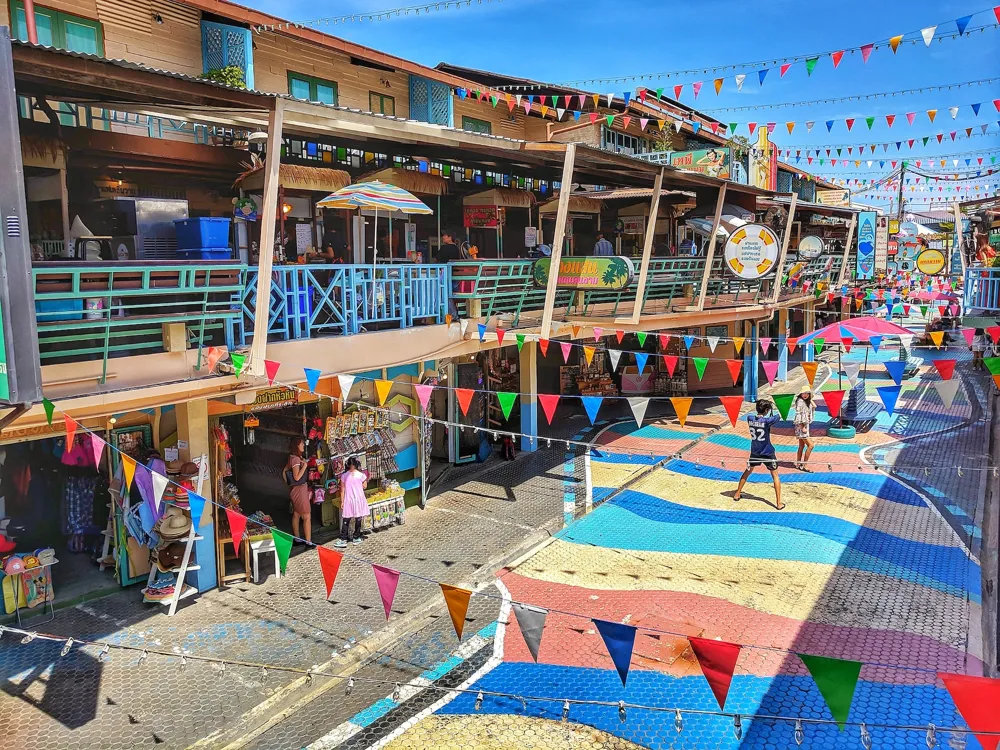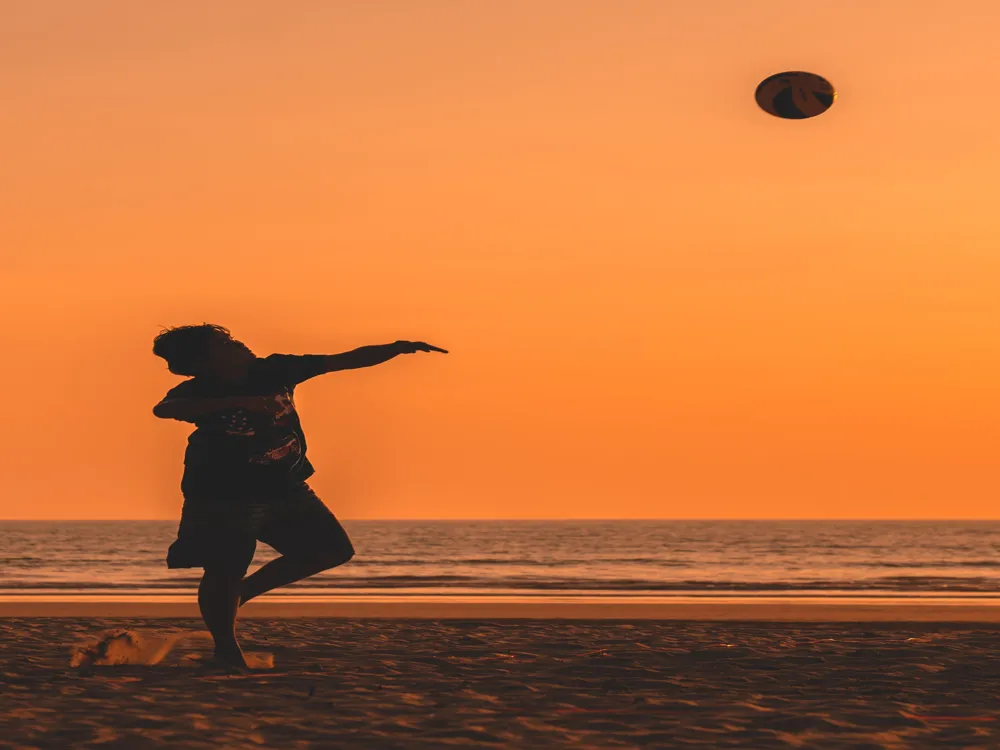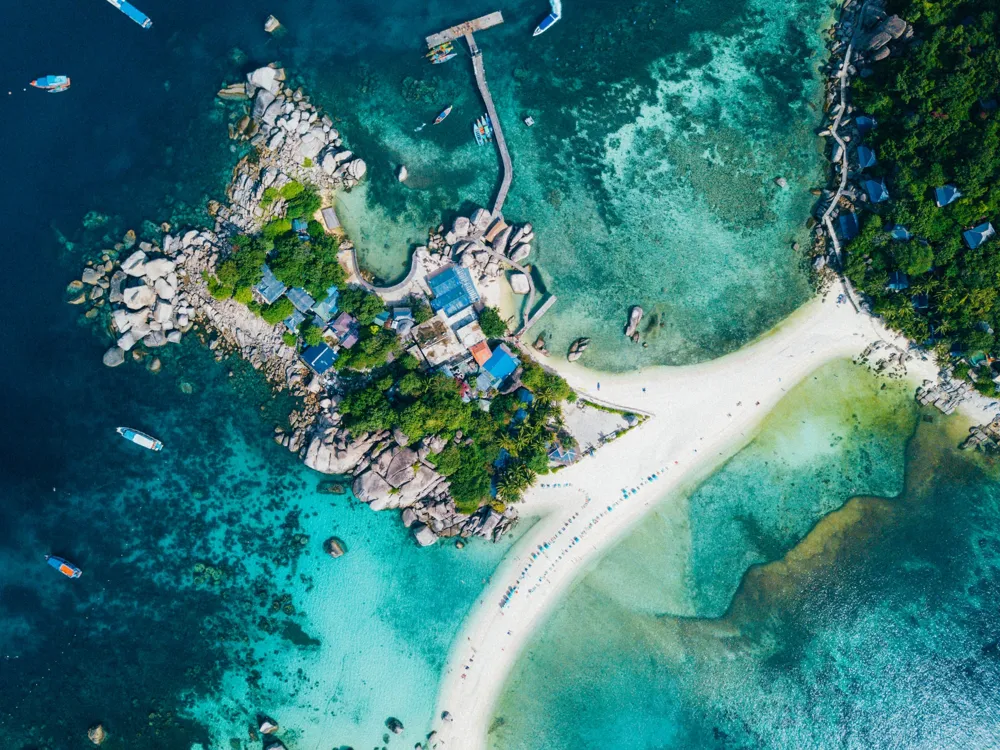Wat Plai Laem, located on the captivating island of Koh Samui, Thailand, is a remarkable site of spiritual and cultural significance. This stunning temple complex stands as a testament to the rich Buddhist heritage and architectural grandeur. It is a place where tranquility meets artistic brilliance, drawing visitors from around the globe. The temple's origins date back to the early 21st century, making it a relatively new addition to Thailand's array of Buddhist temples. Despite its recent inception, Wat Plai Laem has quickly become a revered site, embodying the traditional Thai-Chinese temple architecture with a contemporary touch. The temple complex is situated in the northeast corner of Koh Samui, overlooking the serene lake, adding to its mystical allure. One of the most striking features of Wat Plai Laem is its massive statue of Guanyin, the Goddess of Mercy and Compassion. Standing 18 arms wide, this statue is not only a spiritual icon but also an architectural marvel, reflecting the fusion of various Asian cultures. The Guanyin statue is surrounded by a sea of lotus flowers, symbolizing purity and enlightenment in Buddhist culture. The temple's design incorporates elements from various Asian cultures, predominantly Thai and Chinese, creating a visually stunning and culturally rich ambiance. The extensive use of colors, intricate carvings, and statues of deities and mythical creatures throughout the temple grounds is mesmerizing. The roofs are adorned with colorful tiles and elegant finials, while the walls and ceilings feature detailed murals depicting Buddhist lore. Wat Plai Laem is not just an architectural masterpiece but also a center for cultural and spiritual activities. Visitors can witness monks in saffron robes performing daily rituals, offering a glimpse into the Buddhist way of life. The temple serves as a beacon of peace and spirituality, inviting people from all walks of life to explore and experience its serene environment. The architecture of Wat Plai Laem is a splendid fusion of Thai and Chinese influences, creating a unique and captivating visual experience. The temple's design reflects a deep understanding of both cultures, with a focus on symmetry, harmony, and intricate detailing. At the heart of Wat Plai Laem's architectural splendor is the Guanyin statue. This massive structure, with its 18 arms, is an embodiment of mercy and compassion. Each hand represents a different aspect of Guanyin's ability to alleviate suffering. The statue is coated in white, symbolizing purity, and is adorned with intricate gold patterns, emphasizing its divine nature. The temple complex is home to several other statues and structures, each with its own significance. The large smiling Buddha statue, for example, represents happiness and good fortune. These statues are not just religious icons but also works of art, showcasing the skill and creativity of Thai craftsmen. The use of color in Wat Plai Laem is another aspect of its architectural brilliance. Vivid reds, golds, and greens dominate the palette, each color holding symbolic meaning. Red signifies the temple's Chinese influence and is believed to bring good luck, while gold represents wealth and prosperity. Green, seen in the temple's lush gardens, symbolizes harmony with nature. One cannot overlook the intricate murals and carvings that adorn the walls of Wat Plai Laem. These artworks depict scenes from Buddhist and Chinese mythology, telling stories of gods, goddesses, and mythical creatures. The attention to detail in these murals is astounding, with each brushstroke adding to the temple's mystical aura. The layout of Wat Plai Laem is designed to guide visitors on a spiritual and visual journey. The temple's main hall, the Ubosot, is where most religious ceremonies take place. This hall, with its ornate roof and majestic doors, is a focal point of the temple's architectural design. When visiting Wat Plai Laem, it's important to dress modestly and remove shoes before entering the temple buildings. Visitors should also be mindful of their behavior, maintaining a respectful demeanor at all times. The best time to visit Wat Plai Laem is early morning or late afternoon to avoid the heat and crowds. This timing also offers the best light for photography. Visitors can participate in various rituals like offering food to the monks or lighting incense sticks. These practices offer a deeper understanding of Buddhist traditions. Photography is allowed in most areas, but it’s important to be respectful and avoid taking pictures of people praying or during religious ceremonies without permission. Wat Plai Laem is easily accessible from various parts of Koh Samui. Visitors can take a taxi, rent a scooter, or use the local Songthaew (shared taxi) service. The temple is located near the Big Buddha temple, making it convenient to visit both landmarks in one trip. Read More:Overview of Wat Plai Laem in Koh Samui
Architecture of Wat Plai Laem
Tips When Visiting Wat Plai Laem
Respecting Local Customs
Best Time to Visit
Participating in Rituals
Photography Guidelines
How To Reach Wat Plai Laem
Wat Plai Laem
Koh Samui
₹ 20,280 onwards
View koh-samui Packages
Koh-samui Travel Packages
View All Packages For Koh-samui
Top Hotel Collections for Koh-samui

Private Pool

Luxury Hotels

5-Star Hotels

Pet Friendly
Top Hotels Near Koh-samui
Other Top Ranking Places In Koh-samui
View All Places To Visit In koh-samui
View koh-samui Packages
Koh-samui Travel Packages
View All Packages For Koh-samui
Top Hotel Collections for Koh-samui

Private Pool

Luxury Hotels

5-Star Hotels

Pet Friendly







